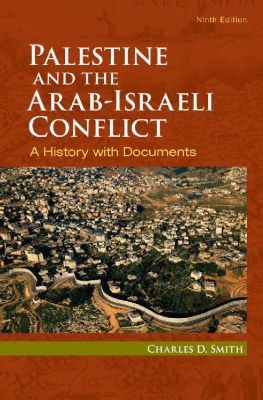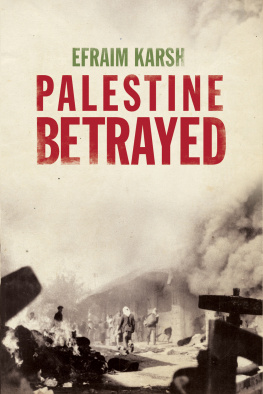
DEFINING NEIGHBORS
J EWS, C HRISTIANS, AND M USLIMS FROM THE A NCIENT TO THE M ODERN W ORLD
Edited by Michael Cook, William Chester Jordan, and Peter Schfer
A list of titles in this series appears at the back of the book.
DEFINING NEIGHBORS
RELIGION, RACE, AND THE EARLY ZIONIST-ARAB ENCOUNTER
Jonathan Marc Gribetz
PRINCETON UNIVERSITY PRESS
PRINCETON AND OXFORD
Copyright 2014 by Princeton University Press
Published by Princeton University Press, 41 William Street, Princeton, New Jersey 08540
In the United Kingdom: Princeton University Press, 6 Oxford Street, Woodstock, Oxfordshire OX20 1TW
press.princeton.edu
Detail of map: Hans Fischer, Palstina, 1890. Eran Laor Cartographic Collection, The National Library of Israel.
All Rights Reserved
Library of Congress Cataloging-in-Publication Data
Gribetz, Jonathan Marc, 1980 author.
Defining neighbors : religion, race, and the early Zionist-Arab encounter / Jonathan Marc Gribetz.
pages cm. (Jews, Christians, and Muslims from the ancient to the modern world)
Includes bibliographical references and index.
ISBN 978-0-691-15950-8 (hardcover)
1. ZionismHistory20th century. 2. Palestinian ArabsHistory20th century. 3. Jewish-Arab relations. 4. Khalidi, Ruhi, 18641913. 5. Ben-Yehuda, Eliezer, 18581922. 6. PalestineHistory17991917. 7. PalestineHistory19171948. I. Title.
DS149.G738 2014
320.54095694dc23
2013040012
British Library Cataloging-in-Publication Data is available
This book has been composed in Charis
Printed on acid-free paper.
Printed in the United States of America
1 3 5 7 9 10 8 6 4 2
To Sarit, Sophie, Daniela, and Max
Contents
CHAPTER 1
Locating the Zionist-Arab Encounter: Local, Regional, Imperial, and Global Spheres 15
CHAPTER 2
Muhammad Ruhi al-Khalidis as-Saynzm: An Islamic Theory of Jewish History in Late Ottoman Palestine 39
CHAPTER 3
Concerning Our Arab Question? Competing Zionist Conceptions of Palestines Natives 93
CHAPTER 4
Imagining the Israelites: Fin de Sicle Arab Intellectuals and the Jews 131
CHAPTER 5
Translation and Conquest: Transforming Perceptions through the Press and Apologetics 185
Acknowledgments
I am indebted to many for their assistance and support as I wrote this book, and it is a pleasure to have this opportunity to express my appreciation.
I began this project as a doctoral candidate at Columbia University, where I came to study Jewish history with Yosef Hayim Yerushalmi, of blessed memory, and Michael Stanislawski. In seminars with Yerushalmi and Stanislawski, I observed how great historians read and analyze texts; I hope that their influences are recognizable here. As my graduate studies progressed, my research interest in Zionism led me to Middle Eastern history. Rashid Khalidi, through his research, mentorship, and generosity, sent me on a journey into the fascinating world of Late Ottoman Palestine from which I have yet to emerge. Khalidi also kindly shared with me Muhammad Ruhi al-Khalidis unpublished manuscript, a text that sparked many of the questions that drive this book. My committee also included two scholars from other universities, Derek Penslar and Ronald Zweig, who treated meand have continued to treat meas their own.
As I was completing my dissertation, I had the privilege of spending a year at the Center for Advanced Judaic Studies at the University of Pennsylvania, where I was welcomed by the centers director David Ruderman. My conversations there with other scholars interested in secularism and modern Jewish historyincluding Annette Aronowicz, Ari Joskowicz, David Myers, Amnon Raz-Krakotzkin, Daniel Schwartz, Scott Ury, and Yael Zerubavelwere most helpful as I considered some of the implications of my work. At the CAJS I also gained a dear colleague and friend, Ethan Katz, who has read and critiqued many parts of this book multiple times.
After I finished my doctorate, the indefatigable Hindy Najman graciously invited me to the University of Toronto. I had the opportunity there to work more closely with my mentor Derek Penslar, who took me under his wings and has wisely and selflessly guided me intellectually and professionally ever since. In Toronto, I also benefited greatly from the intellectual friendships of Doris Bergen, Sol Goldberg, Jens Hanssen, Jeffrey Kopstein, Alejandro Paz, Robin Penslar, Natalie Rothman, and Harold Troper.
I continued working on the manuscript of this book as an assistant professor at Rutgers, where I was blessed with wonderful colleagues in the Jewish Studies and History departments. Toby Jones, Hilit Surowitz-Israel, Paola Tartakoff, Azzan Yadin-Israel, and Yael Zerubavel read key portions of the manuscript and provided critical advice. Other Rutgers colleagues, including Debra Ballentine, Douglas Greenberg, Paul Hanebrink, Jennifer Jones, James Masschaele, Sara Milstein, Eddy Portnoy, Gary Rendsburg, Jeffrey Shandler, Nancy Sinkoff, Camilla Townsend, and Eviatar Zerubavel, helped make my time at Rutgers exciting and productive. I am grateful as well to Arlene Goldstein and Sherry Endick for their exceptional administrative support.
While revising the manuscript, I benefited from the vast knowledge and abundant generosity of Israel Bartal and Israel Gershoni, two scholars who, to my great fortune, were spending the academic year in New Jersey.
Other friends and colleagues who have read and commented on parts of this manuscript at various stages include Leora Batnitzky, Julia Phillips Cohen, Chaim Cutler, Alan Dowty, Jessica Fechtor, Benjamin Fisher, Jackie Gram, David Horowitz, Abigail Jacobson, David Koffman, Steven Lipstein, Jessica Marglin, Eli Osheroff, Elias Sacks, Daniel Stolz, and Joseph Witztum. Omid Ghaemmaghami meticulously reviewed my Arabic transliterations; Rachel Feder painstakingly proofread the entire book; and Menachem Butler provided electronic bibliographical support.
Jeremy Dauber, Martha Himmelfarb, Jeffrey Prager, Peter Schfer, Debora Silverman, and Moulie Vidas have offered sage counsel at every turn.
I received valuable feedback when I presented parts of this project at workshops and symposiums at Brown, Harvard, Princeton, and Yale, and at the annual conferences of the Associations of Jewish Studies, Israel Studies, and Middle Eastern Studies.
I also obtained important suggestions from the anonymous reviewers of two articles I have published that emerged from this project: An Arabic-Zionist Talmud: Shimon Moyals At-Talmud, Jewish Social Studies 17, no. 1 (Indiana University Press, 2010), and Their Blood Is Eastern: Shahin Makaryus and Fin de Sicle Arab Pride in the Jewish Race, Middle Eastern Studies 49, no. 2 (Taylor & Francis, 2013). I thank the editors and publishers of these journals for allowing me to include some of this material here.
I gathered most of the sources on which this book is based during a year of research in Jerusalem. I am grateful to the staffs of the Central Zionist Archives, Israel State Archives, al-Aqsa Library, Haifa Municipal Archive, Jerusalem Municipal Archive, Lavon Labor Archive, Rishon Lezion Archive, and Central Archives for the History of the Jewish People. I am especially thankful to Haifa al-Khalidi, who not only opened the renowned Khalidiyya Library to me for weeks on end but also welcomed my wife and me into her historic Jerusalem home. My months at the Central Zionist Archives were made particularly pleasant by the friendship of, and frequent coffee breaks with, Noah Haiduc-Dale.
I could not have undertaken my research without the support of foundations and fellowships that had faith in me and my project. These include the Wexner Graduate Fellowship, Schusterman Israel Scholar-ship, U.S. Department of Educations Foreign Language and Area Studies fellowship, Kathryn Wasserman Davis Critical Language Fellowship for Peace at Middlebury College, Memorial Foundation for Jewish Culture, and Foundation for Jewish Culture. To assist in the preparation of the manuscript, I received generous grants from Columbias Institute for Israel and Jewish Studies and from the Israel Institute.
Next page












